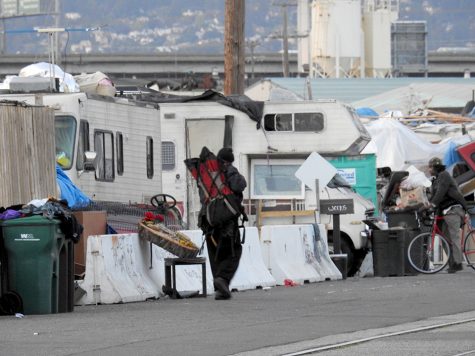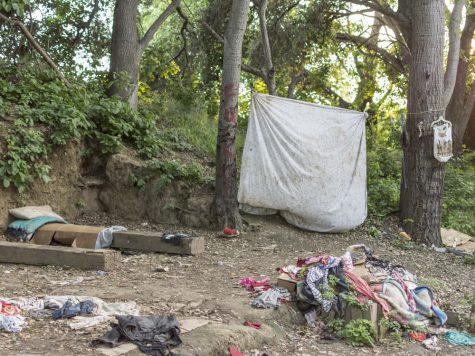Homeless youth can find hope in despair

2015 redesigned Pioneer logo.
November 14, 2017
June 1, 2016 was the night my mom and I came to the conclusion that it was time for me to try to live independently.
I lived at home with my mother for 17 years, but then my mom lost her job. Once that happened, she was no longer able to pay rent. I moved to my grandmother’s house, but only for a short time, after she and her spouse parted ways. I attempted to live with my aunt for a few months, but that came to an end after the lease was up. After these temporary stints of staying with relatives didn’t go as planned, the time for change was necessary.
“How would you feel staying in a transitional home or shelter?” my mom asked me in June. “I just want you to be stable so you can focus on your goals and not have to worry about having a place to stay.”
This idea scared me. I was 20 years of age at the time, an adult, but the thought of living on my own in a strange new place was intimidating. But I thought I’d give it a try. I didn’t have anymore relatives I could feasibly stay with.
After many attempts of reaching out to transitional homes and shelters in the Bay Area, in July I was invited to stay at Covenant House in Oakland. My mom helped me pack my clothes, shoes and essentials, and then we were off. As I said goodbye to my mother and walked into the shelter alone, I was blown away. I thought the shelter might be dirty, but his was far from it; the house was very organized and there was a pleasant vibe to the facility.
Covenant House is a shelter for homeless youth ages 18-24. To live there, residents need either some source of income or to be attending school. The Safe Haven program there allows tenants to stay a maximum of 90 days to get their bearings and show that you are mature enough to move onto the Right Of Passage program, a transitional housing option that lets residents stay for up to two years if they are able to save up to 80 percent of their income.
“Fifty-seven percent of homeless kids spend at least one day every month without food,” said Kevin M. Ryan, president of Covenant House. “Nearly 50 percent reported intense conflict or physical harm by a family member as a major contributing factor to their homelessness.”
Covenant House believes in immediacy, sanctuary, value communication, choice and structure. From the first day I arrived, people there treated me very well.
Life at Covenant House is structured. At 8:05 a.m., I wake up to staff going over meal times and curfew hours. Breakfast is from 6 a.m. to 9:30 a.m., lunch is from noon to 1 p.m. and dinner is 5 p.m. to 5:30 p.m. Curfew is 10 p.m. for everyone unless you have school, work or personal emergencies.
Typically, I wake up and make sure I eat oatmeal during breakfast time. Then I shower, which we have access too in our rooms although it is shared between two rooms. After showering, I make sure I have a healthy lunch, which they never fail to provide. Lastly I’m off to school and work and make sure I grab food in case I don’t make it back in time for dinner.
While adapting to this new set of rules, my life became a bit more focused. No more needing to worry about whether or not I had a place to stay. I could finally just focus on going to school and save up to get my own spot.
On Sept. 9, 2016, I transitioned onto the Rights Of Passage side and felt a huge relief as I took another great step towards the right direction. I graduated from Laney College in Oakland with my AA degree in Dec. 2016. I received a promotion at work a few days later.
In the midst of positive change in my life, I was given an opportunity to be interviewed by KTVU news about my experience at Covenant House. My job was in support of this interview and allowed parts of it to be aired while at work. I work at Oracle Arena as guest service during events. My story was aired Nov. 3, 2016 and the main purpose for the story was to give young people hope about attaining education while being in a transitional home.
The decision for me to leave home was difficult for my mother and me, but I can honestly say it has made our bond that much stronger.






















